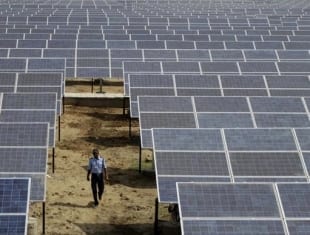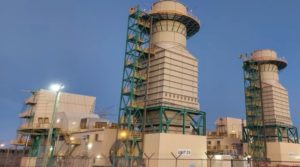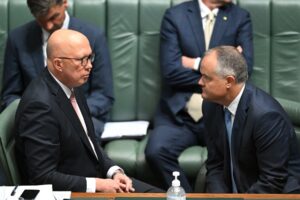The latest auction of solar energy capacity in India has achieved a new record low price of 4.34 rupees/kWh, prompting the country’s energy minister Piyush Goyal to say that solar tariffs are now cheaper than coal-fired generation.
The results of a reverse auction tender of 420MW of solar capacity conducted by the Rajasthan government revealed this week that Finnish group Fortum Energy bid the lowest price of 4.34 rupees/kWh for a 70MW solar PV plant.
It is the lowest price obtained so far in India, which aims to install more than 100GW of solar by 2022, and was hailed by Goyal as a sign that solar power is now cheaper than coal power.
“Through transparent auctions with a ready provision of land, transmission and the like, solar tariffs have come down below thermal power cost,” Goyal said in a tweet.
In a later tweet, Goyal said: “We are moving rapidly towards realising the clean energy vision of Prime Minister Narendra Modi.”
In a week in which it was revealed that China’s coal consumption for electricity had slumped 3.5 per cent last year, it is a further bad sign for Australia’s coal exporters.
The Fortum bid betters the previous low of 4.63 rupees/kWh made by the US-based SunEdison, the world’s biggest developer of renewable energy power plants, for a 500MW plant in Andra Pradesh last November.
Like many such auction results, the Sun-Edison bid was dismissed as irrational. But it was matched a month later in a different auction in December by SkyPower.
Fortum’s offer was also no outlier. The bid was nearly matched by Rising Sun Energy (which bid 4.35 rupees for two blocks), France’s Solairedirect (also two blocks for 4.35 rupees a unit) and Yarrow Infrastructure ( a 70MW plant for 4.36 rupees).
The bids are also not subject to price indexation. Tim Buckley, from the Institute for Energy Economics and Financial Analysis (IEEFA) wrote last month that this means a potential 5 per cent annual real price decline is contractually in place for the next 25 years, a significant long tail advantage of renewable energy.
Fossil fuels by comparison offer prohibitive price variability and currency devaluation risks.
“India currently has over 4.4GW of installed utility solar capacity, and solar consultancy Bridge to India estimates another 16GW of tenders have been allocated or are in the process of tendering, much which we expect to be operational by 2017 at the latest. Rooftop solar is also on a steep upward trajectory in 2016,” Buckley wrote.
“After only 1GW of solar installs in each of 2013/14 and 2014/15, IEEFA estimates 2015/16 installs will more than double to 2.5GW, double again in 2016/17 to 5-6GW and then 9GW by 2017/18. By 2021/22, we forecast cumulative installs of solar to exceed 80GW – close to the Indian Government’s target of 100GW set one year ago.”











